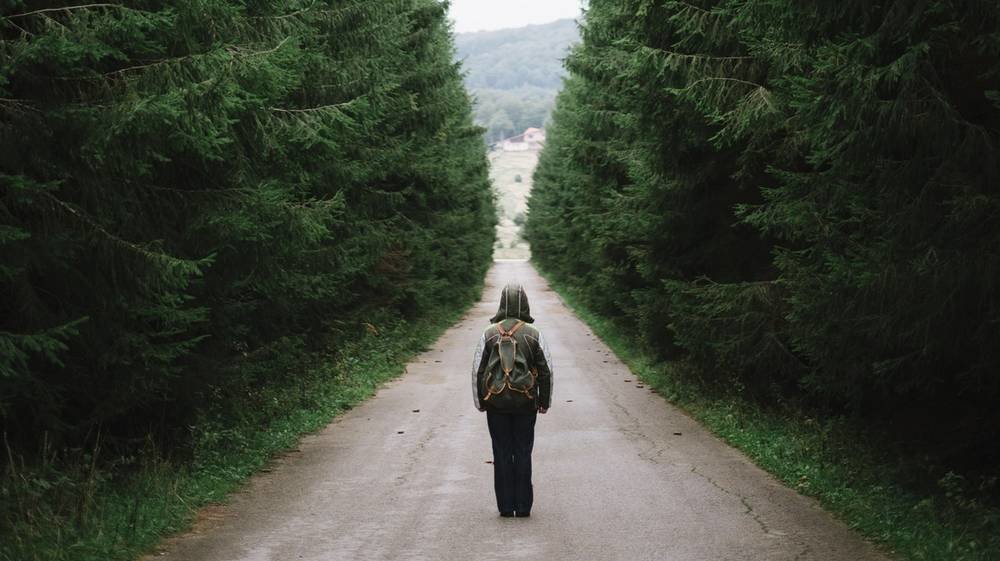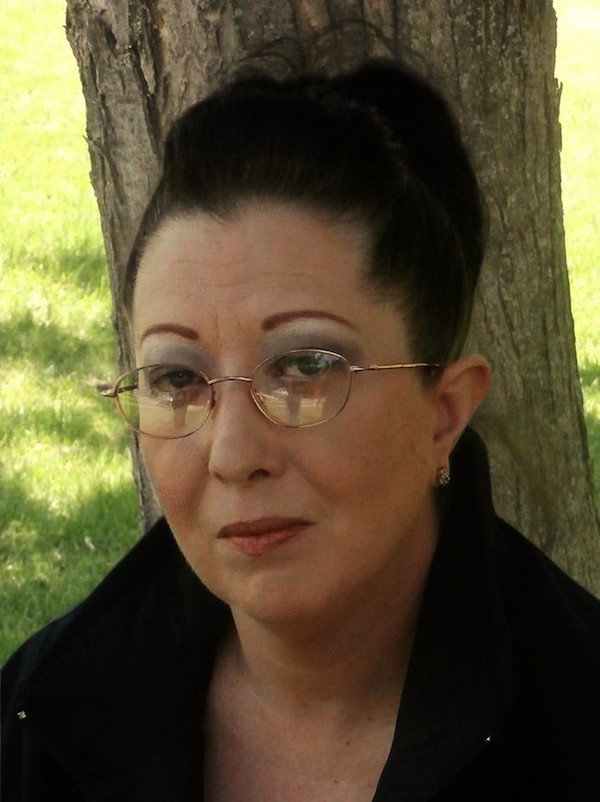Melissa Hovey-Larsen, president of the American Bigfoot Society and one of the few female cryptozoologist researchers, on dealing with Internet trolls and maintaining a healthy dose of scepticism in all aspects of life.

© Pixel Stories via Stocksy
When it comes to Bigfoot, there are more than just believers and skeptics. The world of cryptozoology (the study for creatures whose existence is unconfirmed by science) is a highly political one, full of different factions and more than a little in-fighting. For instance, there is the no-kill vs. kill debate between hunter types out to bag a Sasquatch specimen and those who think we should let the creatures live in peace. There's also the conflict between those out to place Bigfoot in the realm of the paranormal and those who see the animal as one of our biosphere's many undiscovered species.
Melissa Hovey-Larsen,
President of the American Bigfoot Society, was one of only a handful of woman researchers when she entered the field in 2005. She has since become one of its most respected voices, guiding expeditions all over the country, appearing on TV shows like
MonsterQuest, and hosting her own radio show. For her part, Hovey-Larsen is decidedly in the non-kill and "flesh and blood" (not paranormal) camp in the raging Bigfoot debates.
We spoke to her about dealing with Internet trolls, maintaining a healthy dose of skepticism in all aspects of life, and why a woman may be more likely to get closer to a Bigfoot.
BROADLY: You're President of the American Bigfoot Society. How did that come about, and what does your research entail?MELISSA HOVEY-LARSEN: I formed the group back in 2008, because at the time I was moving from Texas to Ohio, and I wanted a group that was across the whole country, so we could network more and discuss different things we were noticing from one area to the next. Before I became a Bigfoot researcher, I was a paralegal and investigator for a public defender, and, if you work in the criminal justice system, you look for patterns. As far as I know, I was the first person to go through reports from multiple databases and look for patterns. I thought if this thing was legit, there would be a pattern to when encounters are happening. Now I can look at a partial report and nail the time of year that it happened. That's what drew me in even further: when I was able to actually see that.
The witnesses I like to talk to are ones who can lose their jobs by talking about something like this, and they're not asking you to do anything but listen to them. They're few and far between, but you come across them from time to time and they make you step back and think. I've talked to people in politics, police officers, firefighters. It really spans the gamut.
Where did your interest in Bigfoot begin?It started when I was really young. On those
Scholastic Bookmobiles, I used to buy the books about scary stuff. I always thought, "Wouldn't it be cool if something like that actually existed out there?" After I moved to Texas, I heard about the Texas Bigfoot Research Center, and because of my background of talking to witnesses and victims of crimes, I thought I could be useful. It's hard for someone who doesn't have experience to weed out the truth from the made-up stuff.
How do you know someone's telling the truth about a sighting?I use your basic tactics. You repeat the story back to them, and change up one or two things and see if they correct you. You can tell by body language. My favorite reports are from kids, because kids have a really hard time lying. They can do it, and they like to do it, but they're not good at it. You can always tell when a child is lying to you, but when you get that kid that's telling the truth, their reaction is either pure awe or complete fear.
As an investigator, it's my job to find out what people saw. I don't take anybody at face value.

© Melissa Hovey-Larsen
It was a report out of Texas. A boy was in a car with some friends coming home from a party, and the boy sees this white Bigfoot out in the field and jumps out of the car and starts chasing it. The Bigfoot makes it to a fence line and clears the fence with one step. The boy, on the other hand, makes it to the fence, starts to climb it, and the Bigfoot is still standing there. It turns around, grabs him by the shoulders, and tosses him back on the ground. His parents actually filed a police report.
Even though the animal could have killed him in an instant, it basically put him back down and said, "No further." That one really stands out in my head as a good example of something that could've gone ugly, but didn't.
If this animal's out there, there has to be a level of intelligence that we're dealing with. That also makes it equally hard to find them and prove they are there.
Do you feel like the popularity of shows like Finding Bigfoot and MonsterQuest have positively or negatively affected your work?I think in some ways it's helped to get people to come forward. It's made it a little bit more mainstream. But it has made it even harder to distinguish the people who are telling the truth. They can give you the keywords the average researcher is looking for to try to hoax you. We put way too much information out there. That's why I don't talk about publicly about a lot of the things I've discovered over the years.
What's the closest contact you've made to Bigfoot?I haven't seen the animal yet, but I have had very interesting things happen—one that made me wonder what the hell I was out there doing out there because it scared the living crap out of me.
It was in 2010 in Virginia. I was actually in the middle of a live radio interview, and I was down by this manmade pond. It was really dark, and I turned around to go back to base camp. I could see a fishing lure reflecting the light in a little bush, and above that were these two glowing eyes. I could not believe what I was seeing, and the skeptic in me, realizing I was in the middle of a phone interview for a radio program, didn't want to shout out, "You won't believe what I'm looking at right now," but I could stand and watch as the two eyes moved in unison. I call it the woman-in-the-dark-alley syndrome. You know when you're being looked at. When we finally figured out the measurement of what I had seen, it matched up to what the owner of the property had said, that it was a creature between seven and seven-and-a-half feet tall. I was about a hundred yards from it, so I can't really say it was a Bigfoot. I don't know, but these were some big eyes. I've never seen anything like that before or since.
Another time, my husband and I were down in Salt Fork State Park in Ohio. We were in a tent and he was recording, and all of a sudden we could hear something really heavy walk across the little road. We listened to this thing as it walked into camp, and we could hear it breathing. My first concern was [that it was] a bear. It went over to our vehicle and pulled on all four of our car door handles. The only bears in Salt Fork are black bear, and black bear do not have retractable claws, so if had been a black bear pulling on our door handle, we should've had had marks. There were no claw marks on our car. Whatever it was, it was big. It had really deep, chesty breathing. We had a bear expert listen to the audio, and even he said it was not a bear. We've gotten recordings like that now from two different locations here in Ohio. Those are the two times I thought to myself, "If this is what we think this is, we're playing with fire."
This tends to be a male-dominated field and interest. Why do you think that is? Is that changing?It was heavily male-dominated when I first got involved back in 2005. You could count the seriously active female field researchers on two hands. As a woman, they didn't really care what you had to say, and probably in some groups they still don't. But I, along with a girlfriend of mine, were very vocal about the necessity of having more woman involved. If you look at the history of discovering and studying large primates, who has been able to get closer? Women. Look at what
Jane Goodall did, and that was only because she was able to get closer to them than her boss. We have a more nurturing spirit, and I think animals—primates in particular—pick up on that.
Does being a woman in the field present any particular challenges or have any advantages?For me personally, it really wasn't a particular challenge because I'm used to having to try to prove myself. If you're a woman, sooner or later, you'll find yourself challenged by men. I was raised on a farm and if I get it in my head to do something, I'm going to do it. If you're a woman, there's just some level of having to prove that you're capable.
Women have a lot to offer the research in general. It doesn't have to be primarily men running the show because men hunt. I get that a lot. I had one guy write a blog about me, saying that I should be out shopping and buying purses. I was like, maybe that's what makes your wife happy, but I like to challenge myself.
Have you had to deal with a lot of sexist attacks online?I can't even keep track of them all. I have a very thick skin. I mean, if this is the way they want to talk to their wives or the women in their world, that's their business, but I don't put up with that crap. There are still those men in this community, who are online basically to start trouble. They get a kick out of the typical Neanderthal behavior. But I will tell you, I have quite a few male friends that I share information with, and they respect me, and I respect the hell out of them. They're hardworking guys who just want an answer to the mystery. Those are the people I work with, who are not involved in the politics, but simply want answers to the mystery.
What advice would you have for an amateur interested in catching a glimpse of Bigfoot?The best advice I have is to bring a healthy dose of common sense. Don't just jump in with the first group of researchers you find on the Internet because they seem to know everything.
We don't really know anything at all. We only have bits and pieces of a huge puzzle.
Comment: Related articles: